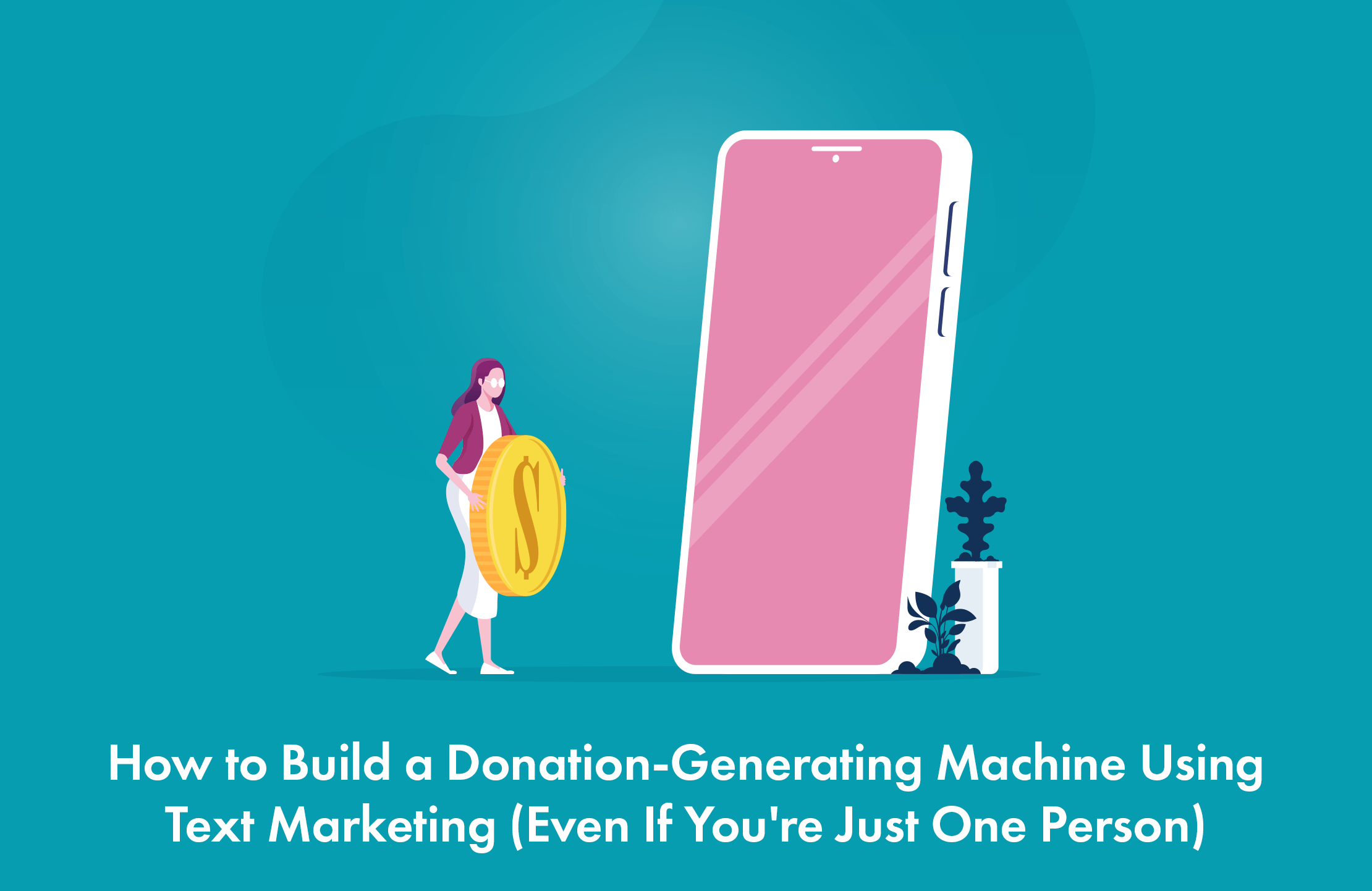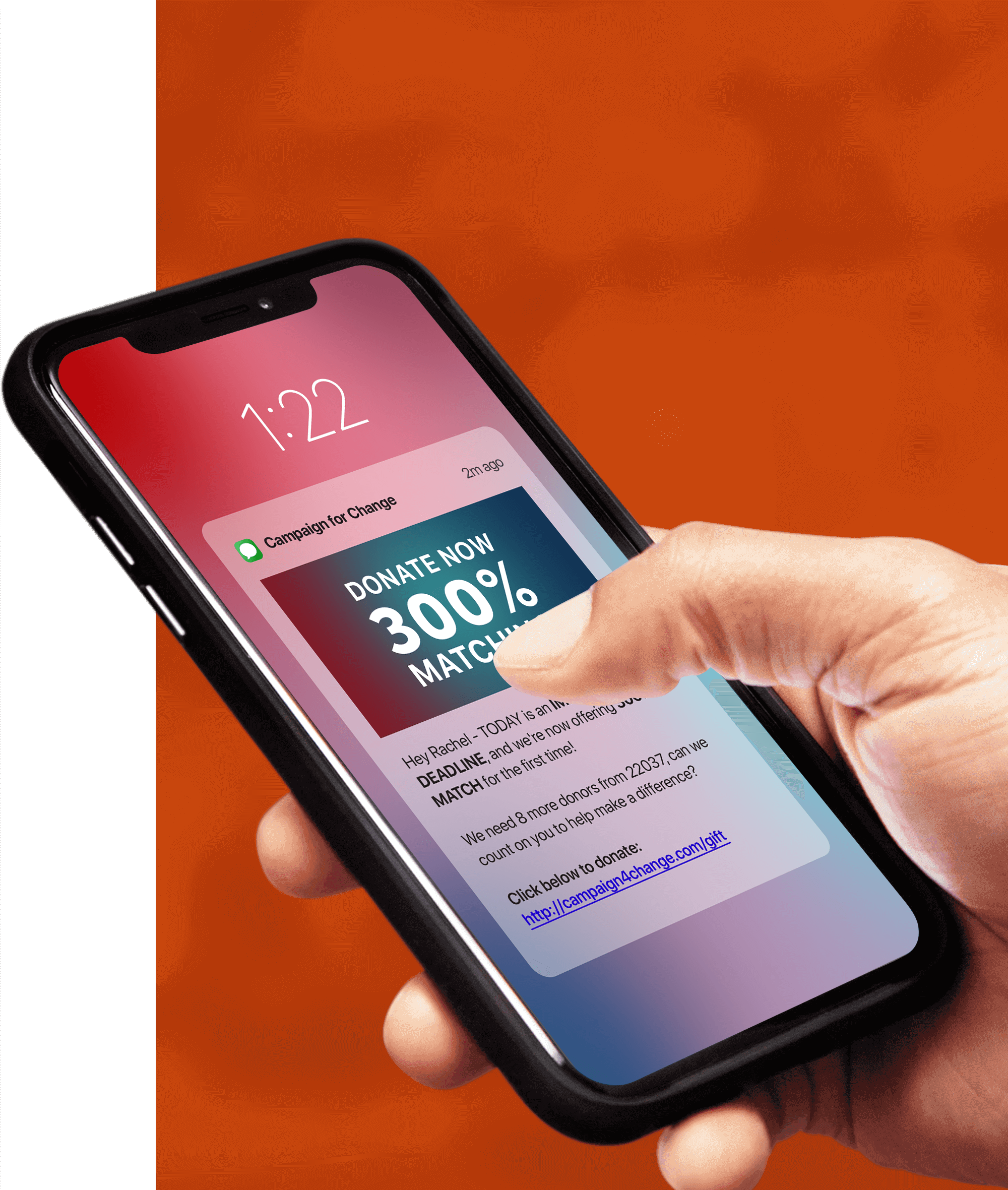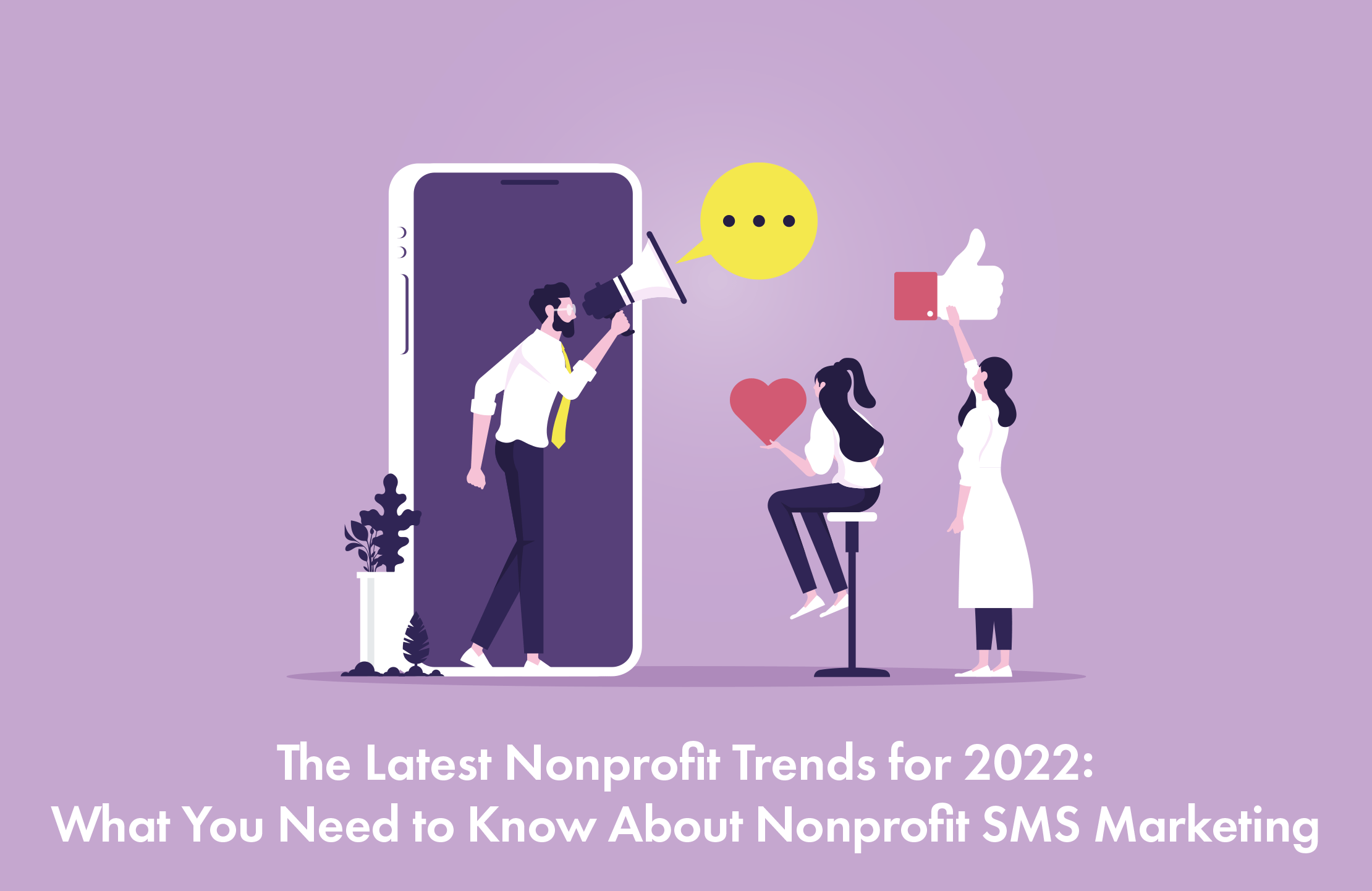
If you represent a nonprofit organization, there’s a secret ticket to generating new donations and making new contacts—and you may already be familiar with it. It’s called text message marketing.
How effective is SMS text-to-give marketing? According to NonprofitsSource.com, overall nonprofit giving increased 4% in 2021. However, the slice of that pie representing donations made through SMS text-to-give increased by 12.5%. SMS giving is clearly on the rise.
How Good a Secret is SMS Text-to-Give?
It must be a good secret because, according to an NGO Global Technology Report, only about 15% of nonprofits use SMS text-to-give as a fundraising vehicle. Why so few? There are likely two reasons. First, while SMS text-to-give has been around for years, it’s only recently gaining traction as a fundraising technology for nonprofits. If you are already using SMS, congratulations. You’re an early adopter.
Second, many nonprofits are likely cautious about bombarding donors through yet another channel. That’s understandable; contact frequency with donors is a delicate dance. What many nonprofits don’t realize is that SMS text-to-give messages tend to reach new audiences who are not yet aware of them and their mission.
In 2010, the American Red Cross launched an SMS text-to-give campaign to raise money for victims of a devastating earthquake in Haiti. Donors gave $32 million through text messages. According to a report by CNN, of the 3 million donors who contributed, 75% said it was the first time they’d ever donated through text messaging.
Many people developed some great philanthropic habits, too. CNN further reports that in the two years following the earthquake in Haiti, 40% of those donors also gave to earthquake relief efforts for the 2011 earthquake and tsunami in Japan. Another 27% texted donations supporting relief efforts for the 2010 BP oil spill, and 18 % texted donations in 2011 to help victims of tornadoes in the U.S.
In all, 56% of those who gave to the Haiti mobile campaign also donated to other humanitarian crises via text message.
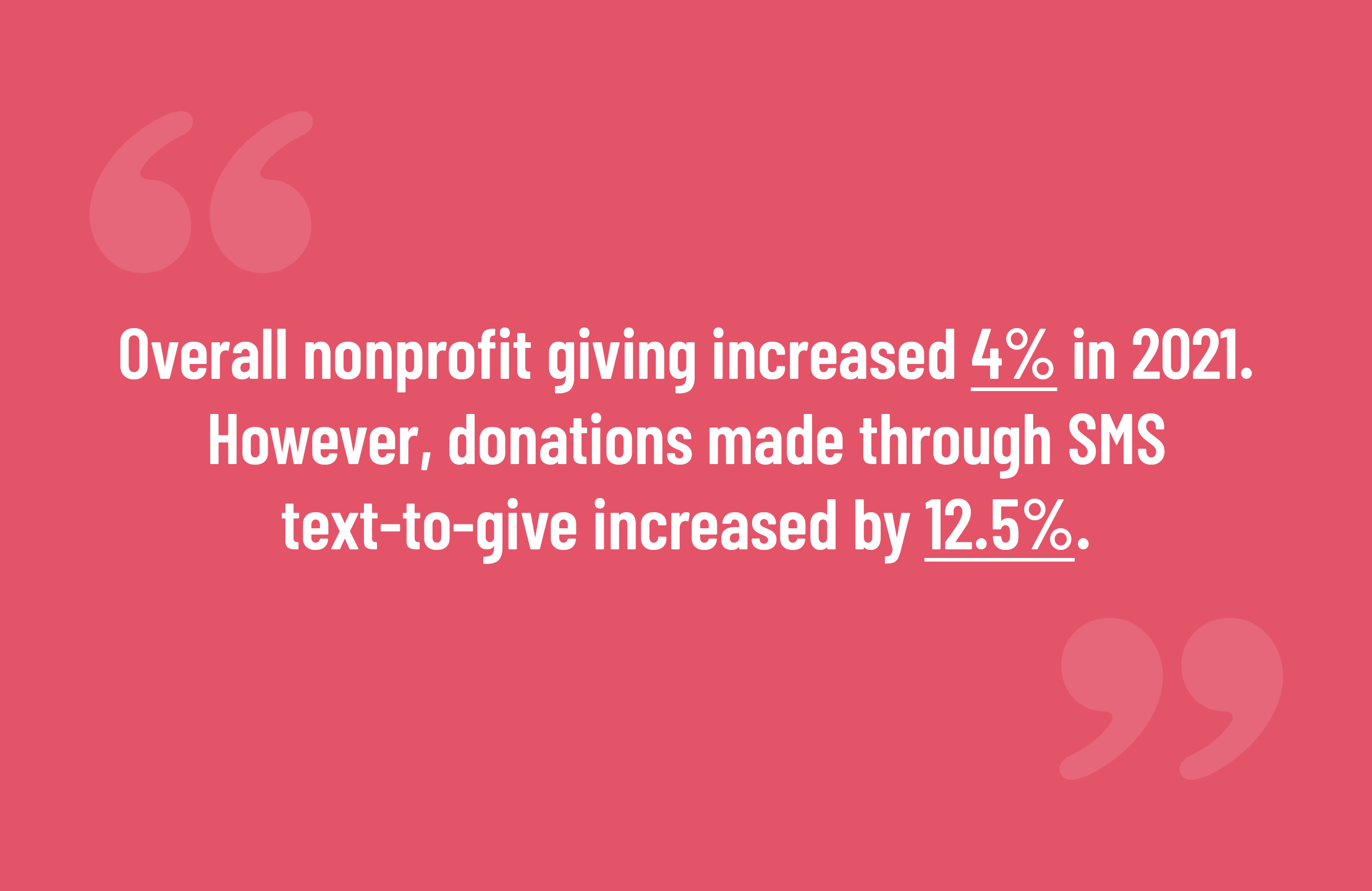
Top Nonprofit Trends for 2022
With only 15% of U.S. nonprofits engaging in SMS marketing, there’s very little information on best practices. Any new technology brings with it a great deal of innovation. With that in mind, Tatango brings you the latest trends in SMS text-to-give fundraising for nonprofits.
Don’t Underestimate the Value of Personalization
About 60% of donors say a personalized experience is important to them, but only 44% percent express satisfaction with the level of personalization they currently receive.
Tatango’s segmentation capabilities make personalization easy. Send text messages to your subscriber lists using segmentation to greet each recipient by name. Or send a different message to those who have already donated.
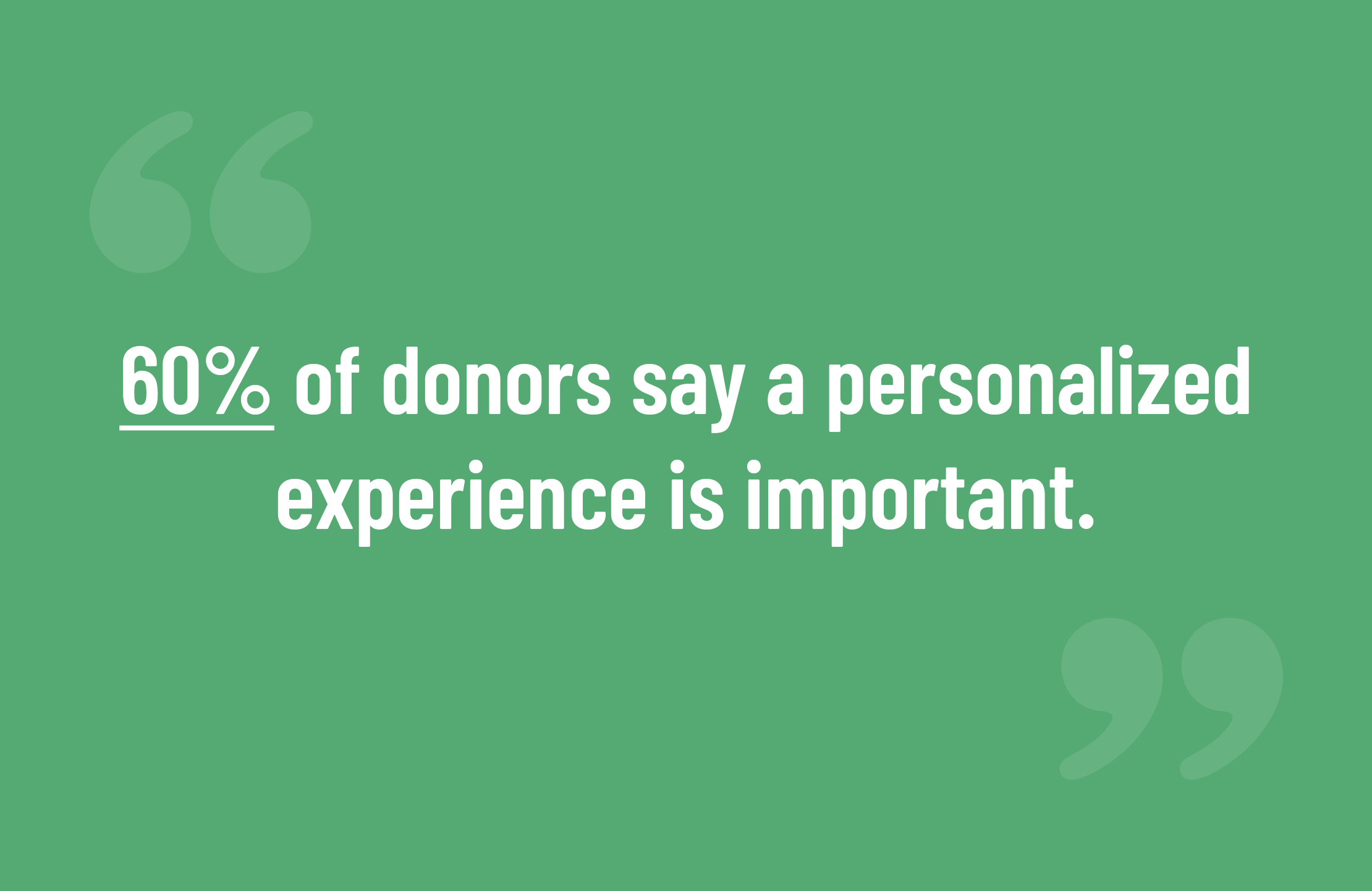
A Quality Online Experience Goes a Long Way
About half—51%—of people who visit nonprofit websites do so on a mobile device. Strive to achieve continuity across your website. Every part of your campaign should reflect your organization’s overall message. NonprofitSource.com reports that a custom-branded landing page, one that ties in with your campaign, can increase your donations by as much as six times and lead to more opt-in conversions.
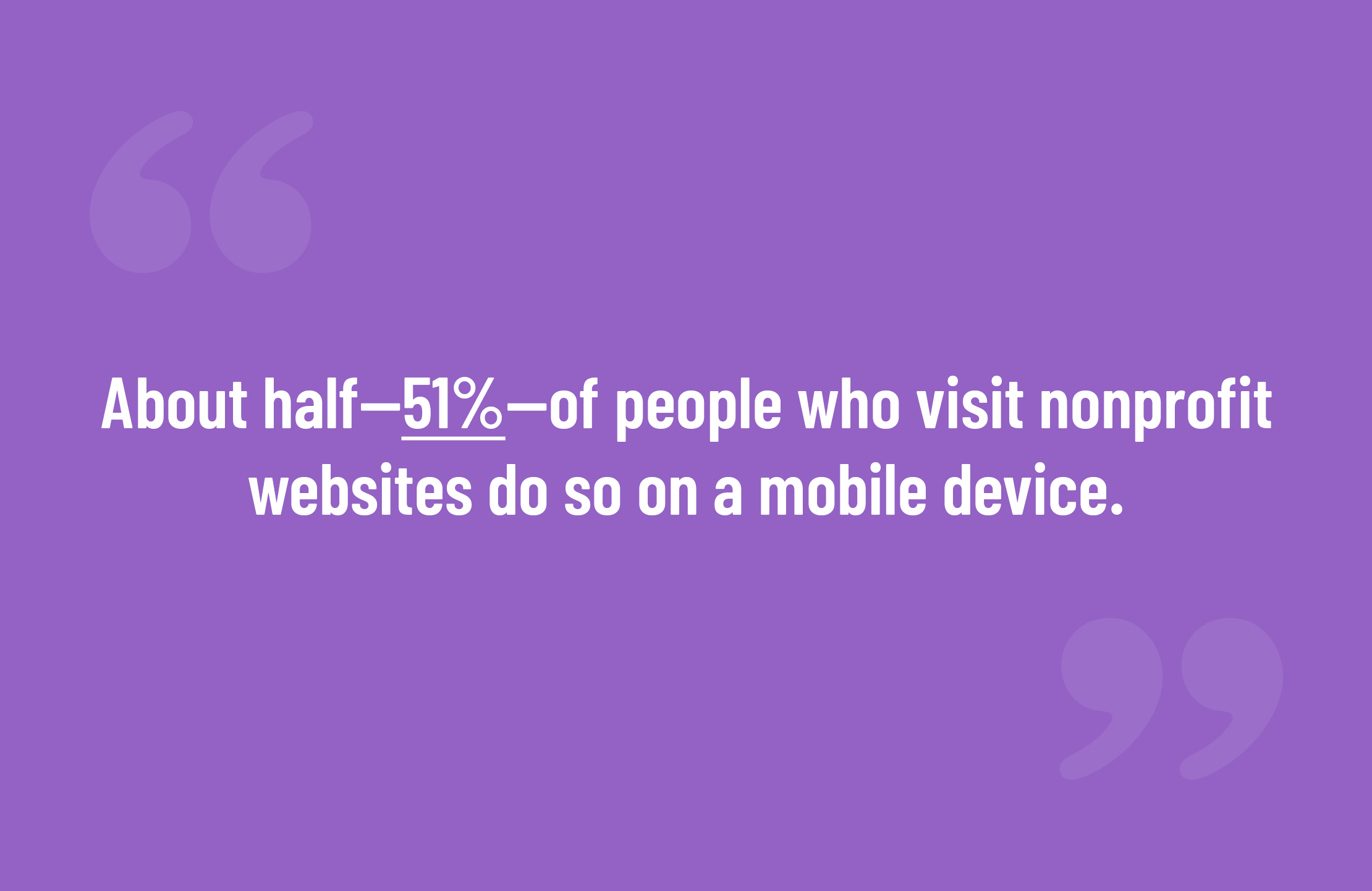
Crypto Is Making a Difference
There are more and more signs that cryptocurrency is here to stay. According to The Guide to 2022 Fundraising Trends by Keela, a Canadian-based nonprofit technology company, some nonprofits are now giving donors the option to donate in cryptocurrency.
The National Council of Nonprofits reports that accepting crypto is not that difficult, and laws currently favor crypto owners when they make donations: “… cryptocurrency has reached and sustained a valuation of over $2 trillion in 2021, and many people are now sitting on appreciated coins with not many places to use them. On the flip side, the IRS incentivizes donations of crypto similarly to gifts of stock. Cryptocurrency is considered property, and donating it is a nontaxable event.”
Keela also reports that 55% of those surveyed said they would donate if the nonprofit accepted donations from trusted payment apps such as PayPal, Venmo, Cash App, and others. Plus, it’s expected that more nonprofits will begin using digital wallets such as Google Pay and Apple Pay.
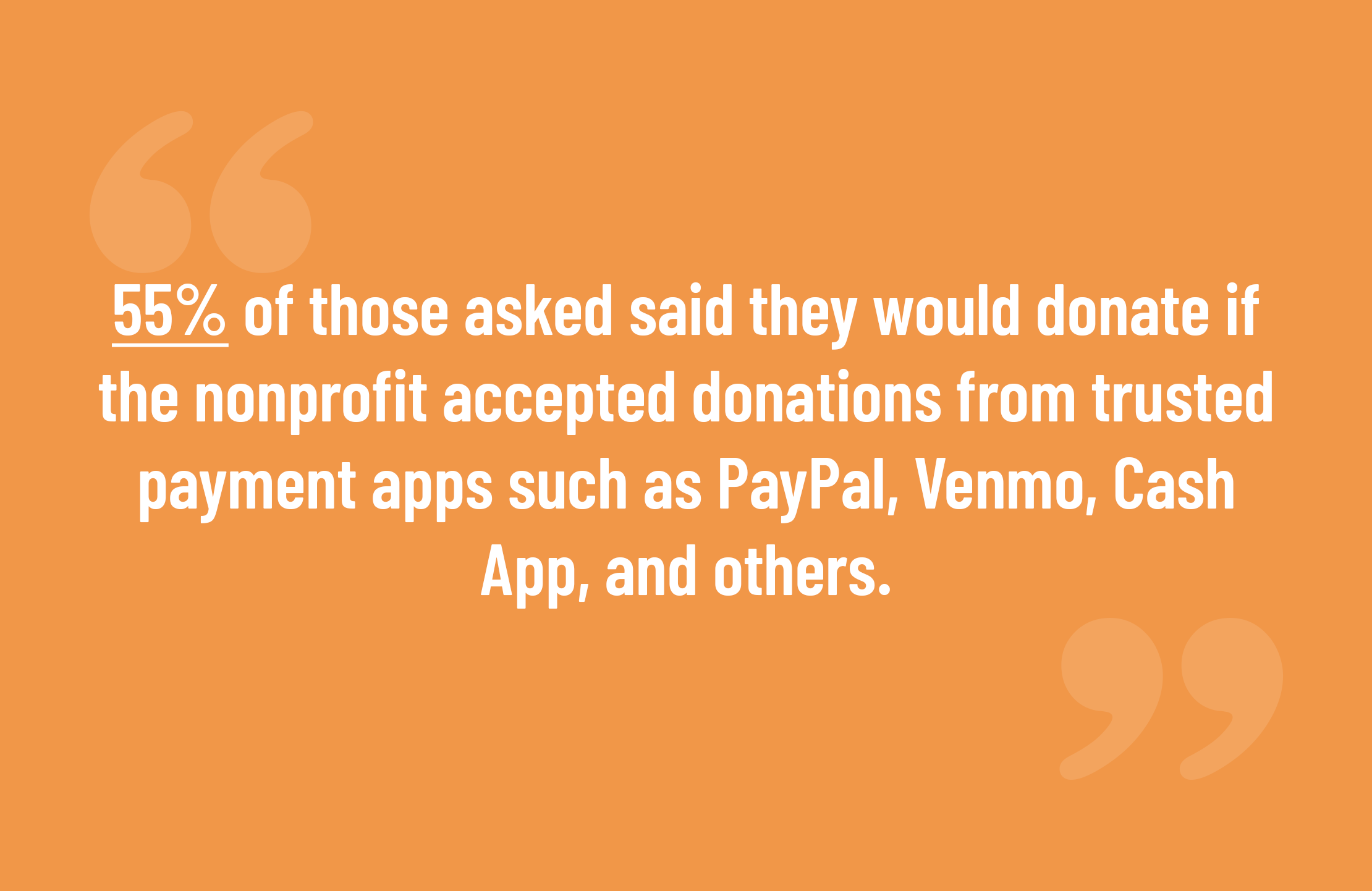
Donors Will Share Their Mobile Number for SMS Text Messages
The NonProfit Times reports that the best nonprofits have added an SMS field to their sign-up forms on their website and that this feature has driven explosive growth for some organizations. Some nonprofits see as much as 50% of online giving coming from mobile devices.
Early testing indicates some best practices:
- Asking supporters through other channels—including email and Facebook—to opt in for updates.
- Adding a phone number field to your existing sign-up forms.
- Appending cell phones to supporter records using third-party sources.
Nonprofits Using SMS Text-To-Give Have the Potential for Much More
According to a 2021 M+R Benchmarks study, the audience size for SMS text-to-give messaging grew 26% over the previous year. In contrast, the audience size for email grew by just 3%.
The study adds that email reigns supreme in raw numbers because those lists have been around longer. Of course, the starting places are very different. For most nonprofits, email programs are much more mature. Fundraising professionals have spent many years growing and curating those lists. “Despite the impressive growth in 2020, mobile list sizes have room to scale up. On average, nonprofits had 50 mobile list members for every 1,000 email subscribers.”
A large text messaging audience is still waiting for you to reach them.
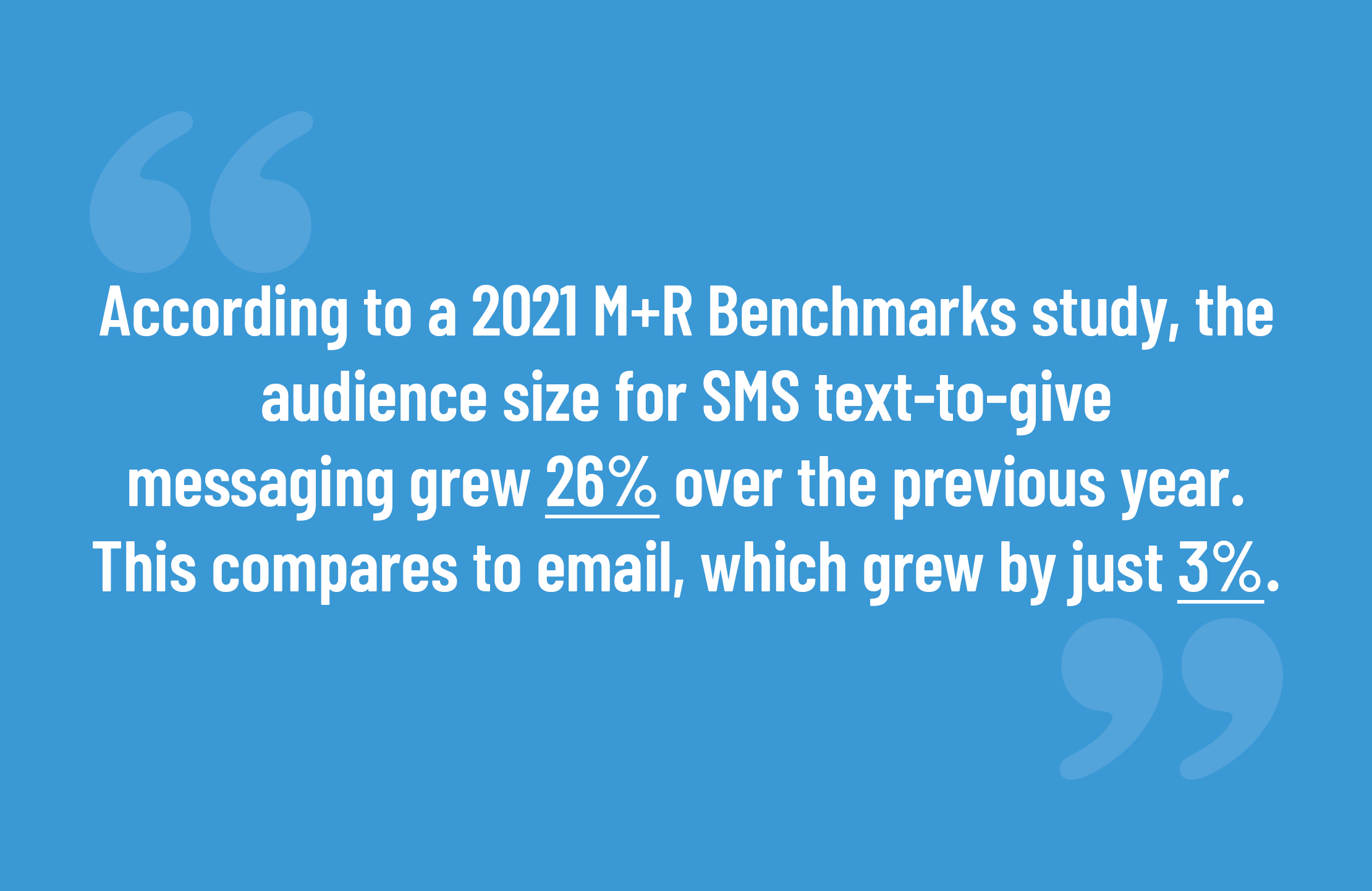
Tatango Can Help
One more trend in SMS nonprofit fundraising is partnering with a solid SMS partner. At Tatango, we offer our clients the best technology and the most up-to-date industry knowledge. Our clients routinely report a 500% ROI on SMS campaigns. Schedule a call with an SMS marketing expert at Tatango today.
